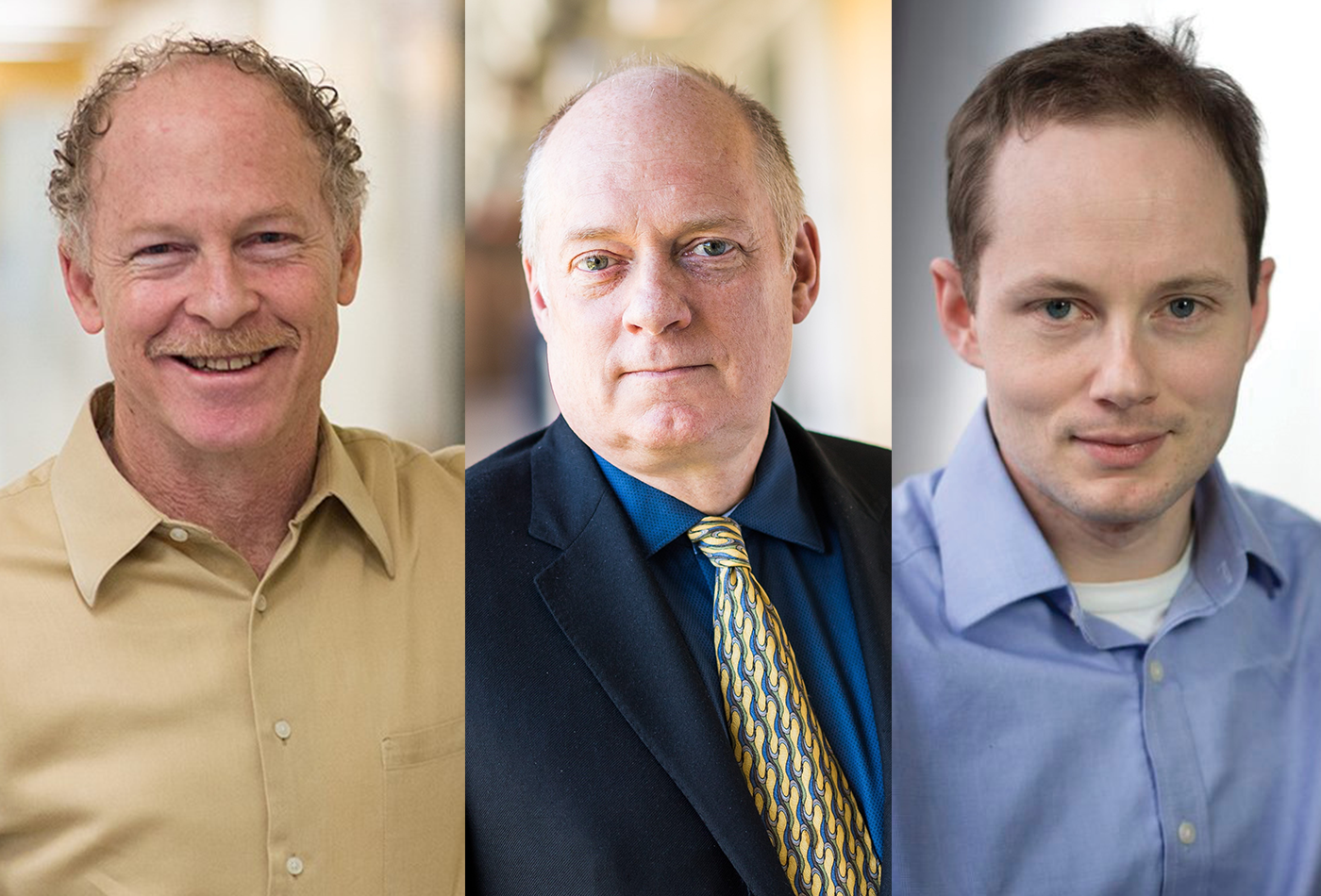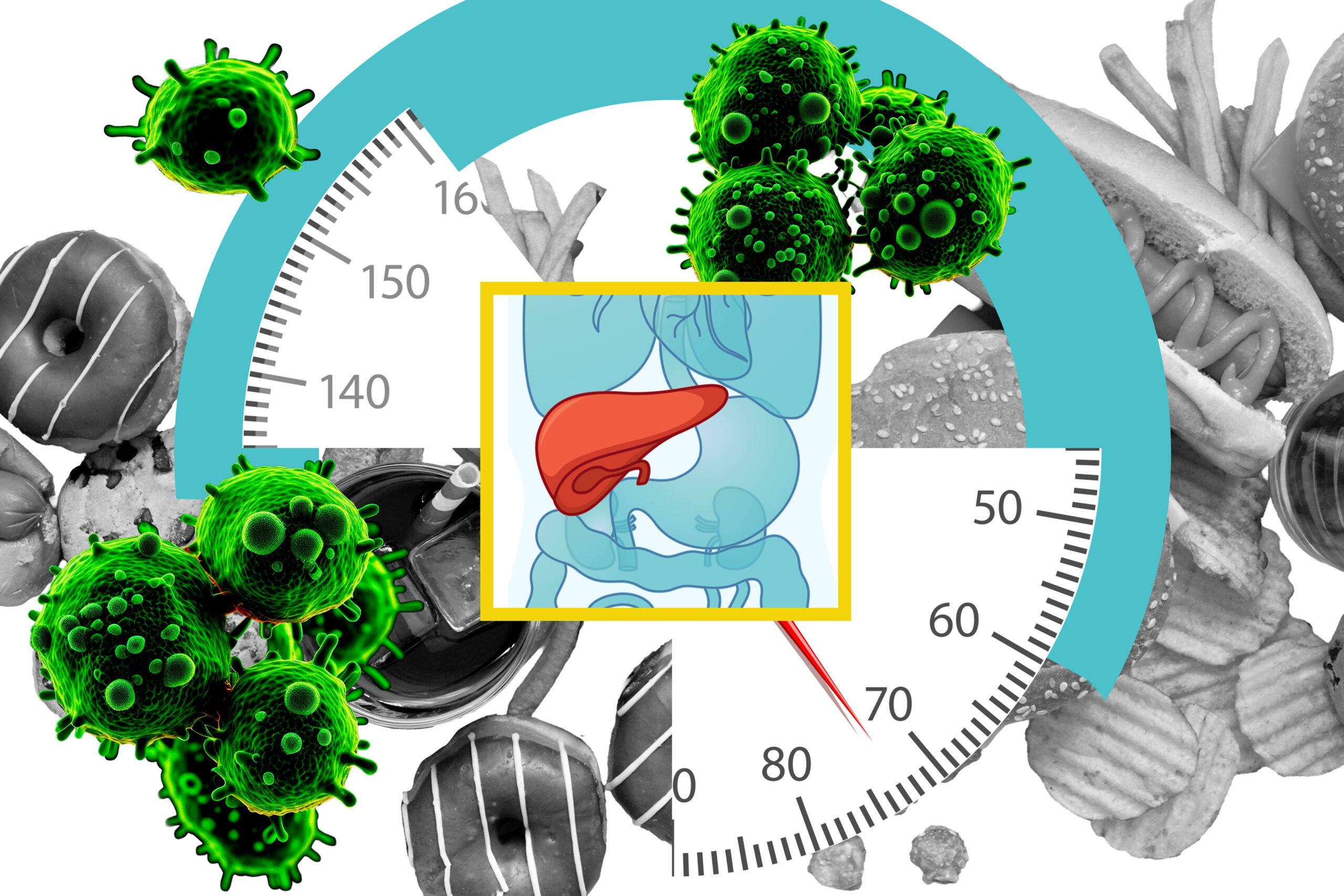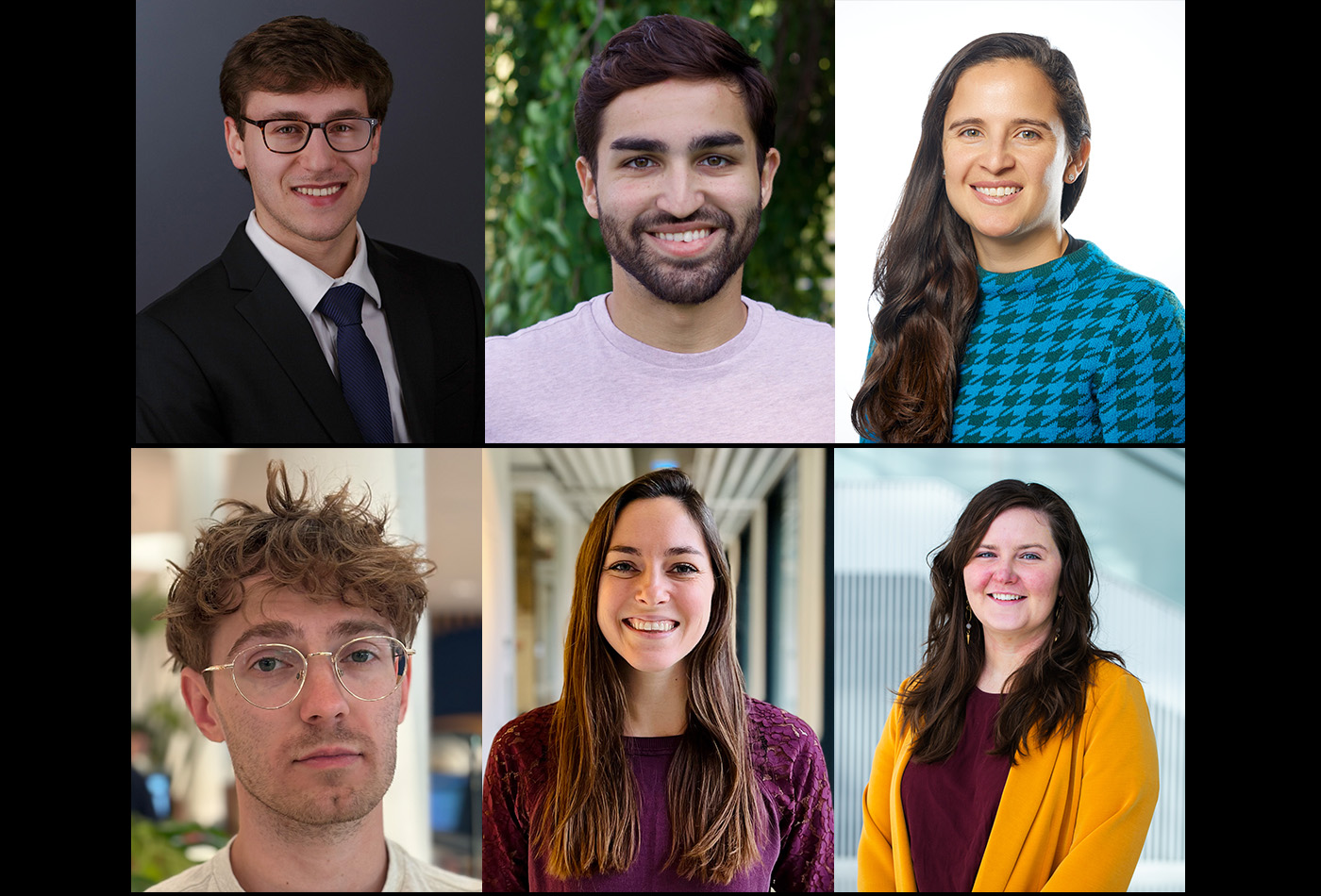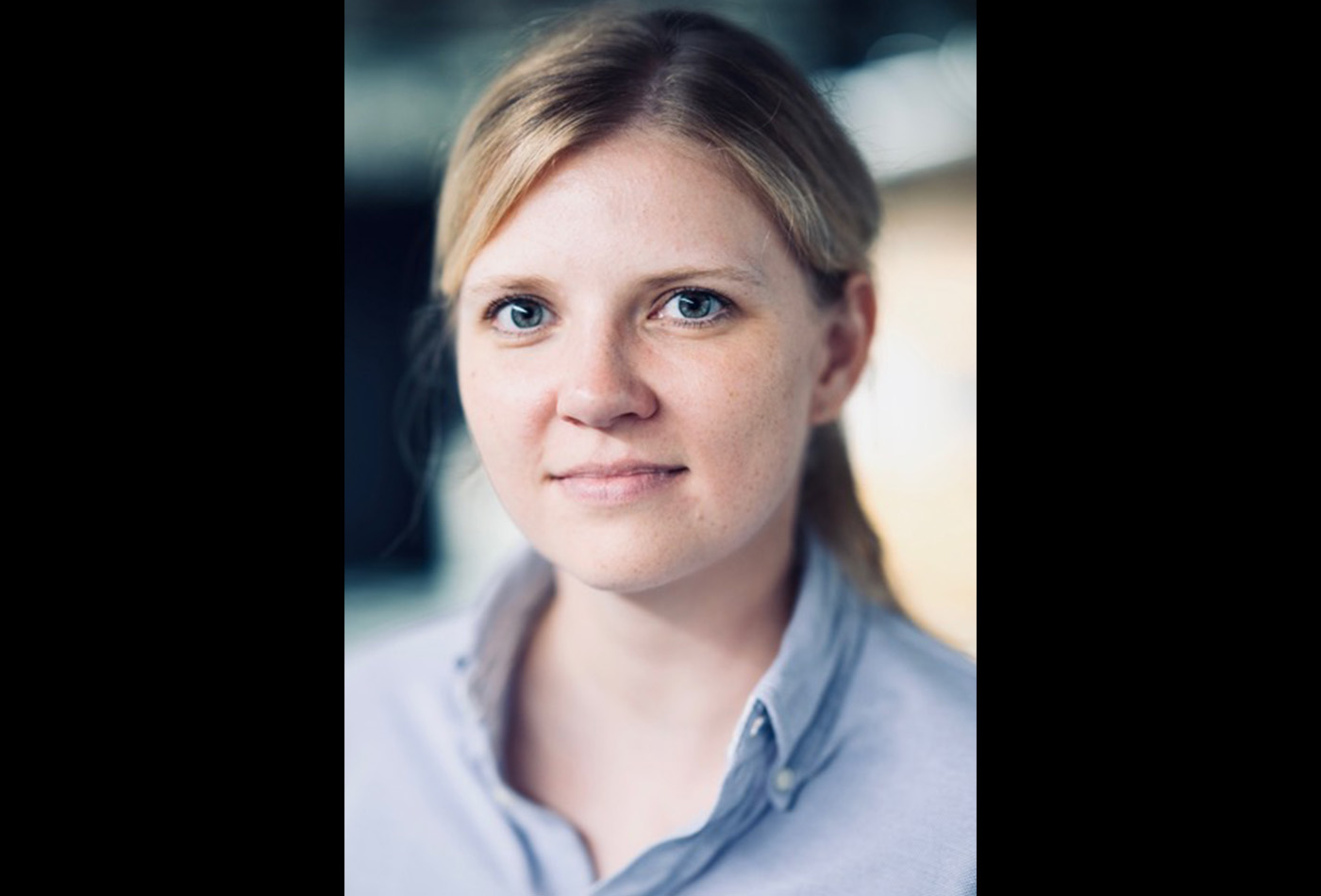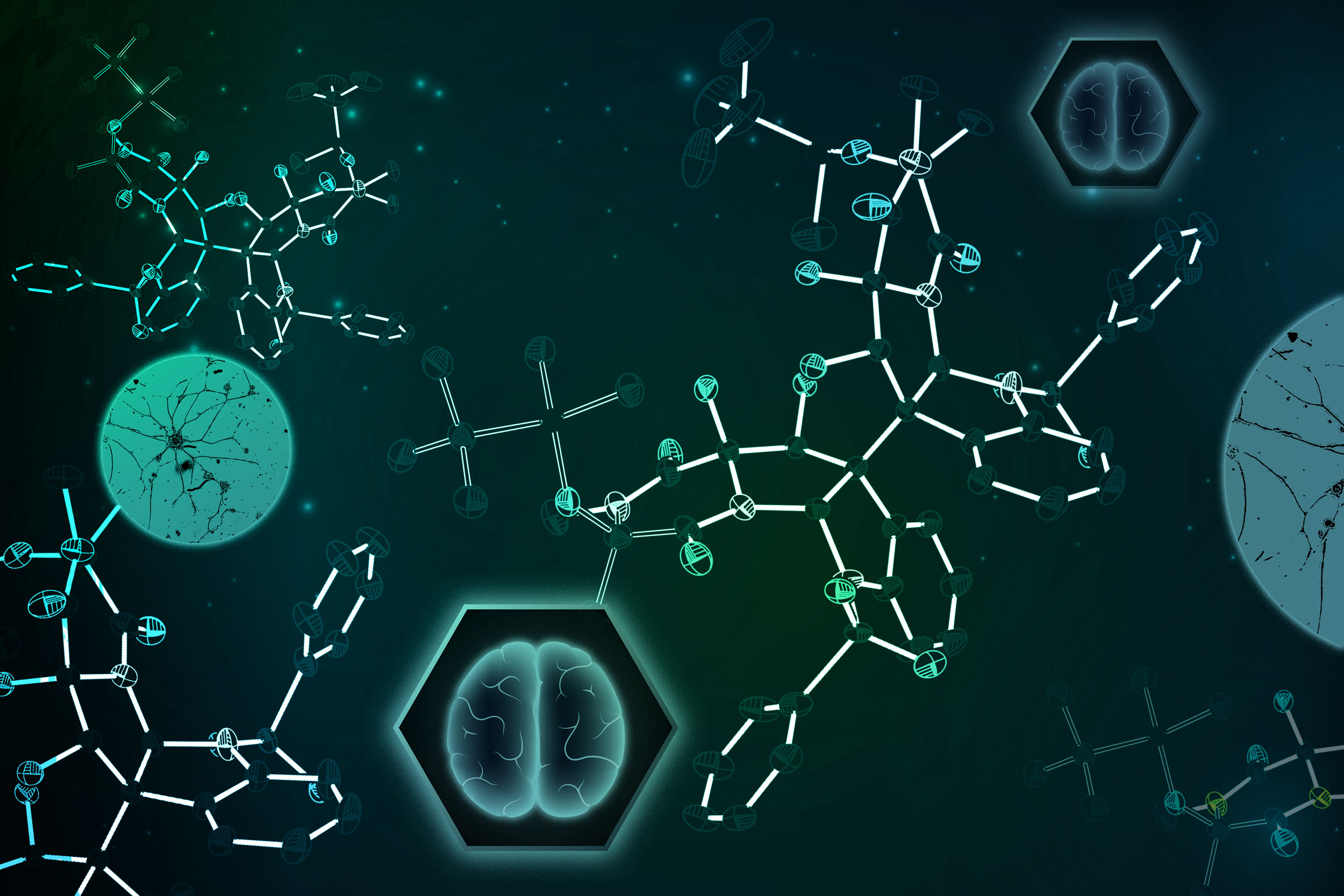Three faculty named as research collaborators in the 2021 class of LUCI Fellows
Professors Swager, Nelson, and Englund will work with scientists from military service labs in this DoD-funded initiative.
Timothy Swager, Keith Nelson, and Dirk Englund have been named as research collaborators in the most recent class of Department of Defense (DoD) Laboratory-University Collaboration (LUCI) Fellows.
The LUCI fellowship is awarded annually in support of ten collaborations between university researchers receiving DoD funding and scientists from across the military service labs. Each project will be eligible for up to $200,000 per year for three years.
“The Department of Defense is the home of big ideas for mission-based problem sets,” said Dr. Bindu Nair, Director for Basic Research in the Office of the Under Secretary of Defense for Research and Engineering, which funds the program. “The LUCI Program reflects the Department’s commitment to support unfettered, curiosity-driven research and the innovative spirit of universities by combing their energy to focus on paradigm-shifting ideas.”
John D. MacArthur Professor of Chemistry Timothy Swager will be working with Drs. Luke Baldwin and Christopher Crouse of the Air Force Research Laboratory (AFRL). The team will explore flow chemistry, which uses millimeter diameter tubing to conduct reactions in a continuous flow, as an emergent and efficient method of functionalizing carbon nanomaterials.
“Generating highly reactive intermediates in flow reactors at AFRL provides exquisite control that will be used to create materials with superior properties. MIT will provide precursor reagents for these studies and create new chemical/biological sensors and electronic devices from these new generations of materials,” said Swager.
Baldwin says that another goal is to establish strategic collaborations with artificial intelligence (AI) experts as well. “Exploring active machine learning for reaction optimization in synthetic chemistry will allow scientists to accelerate research by being able to more efficiently explore chemical reaction parameters.”
The collaboration is expected to open new doors in discovering novel materials for sensors, composites, and optoelectronics. Between a state-of-the-art Vapourtec flow chemistry system recently acquired by the AFRL and the Swager group’s interest in characterization of new materials and device integration, this partnership leverages the instrumentation capabilities and expertise of both groups.
Haslam and Dewey Professor of Chemistry Keith Nelson will be working with Dr. Cyril Williams from the US Army Research Laboratory (USARL). The researchers will study US Army-relevant materials under extreme dynamic environments, using a high throughput tabletop laser-driven 2D shock-focusing technique developed at the Institute for Soldier Nanotechnologies at MIT (ISN@MIT).
“This LUCI-funded collaboration will finally allow us to start a project that we have been discussing with [Williams] for several years now,” said Steven Kooi, a Principal Research Scientist at ISN@MIT.
“The proposed experiments will increase the fundamental understanding of deformation mechanisms and failure processes active at the extremes. In more broad terms, these experiments will enable ARL-MIT researchers to access unprecedented pressures (~500 GPa) to study material behavior, which are not commonly available at small-scale facilities,” Williams said.
According to Kooi, the ISN-developed technique, in combination with Williams’ expertise in large scale ballistic impact testing and development of novel nanocrystalline metallic alloys, will allow the team to test new materials that are only available in small quantities. Results will then inform scientists as to which alloys are worth investigating in scaled-up quantities for bulk experimentation.
Dirk Englund, Associate Professor of Electrical Engineering & Computer Science, will be working with Dr. Dashiell Vitullo (ARL) to develop optical cavities suitable for distributing and controlling quantum light. Their stated goal is to further the creation of quantum networks, platforms that support applications in secure communication and remote sensing.
With tremendous potential for fast optical information processing, nonlinear optical interactions enable one light field to control another with a nearly instantaneous response time. The proposed research aims to drastically improve speed for classical information processing using optical neural networks as well as enabling optical quantum information processing at room temperature.

